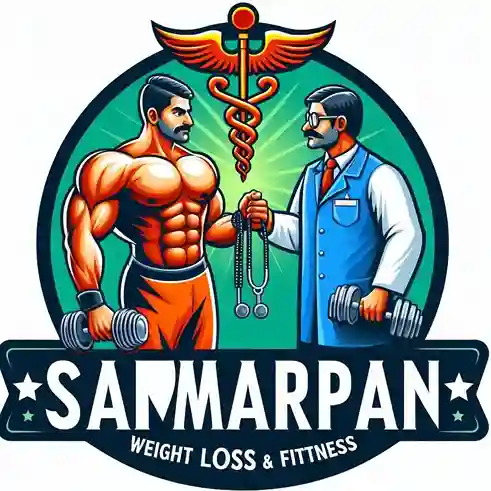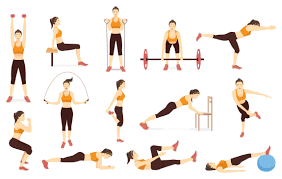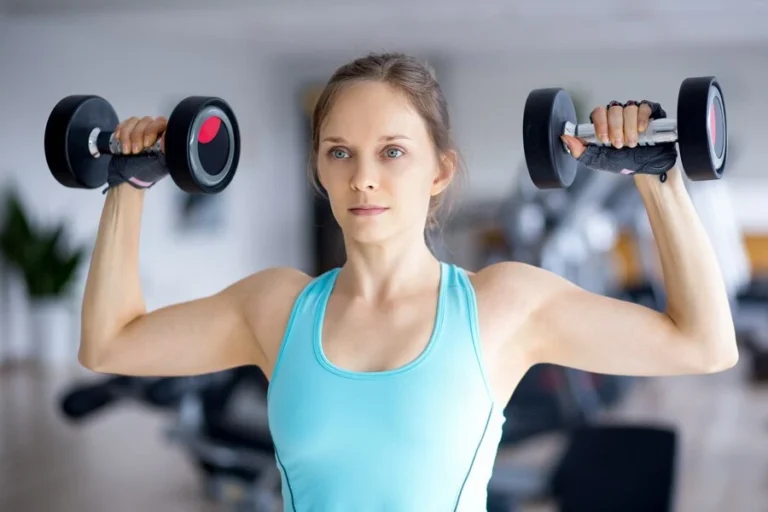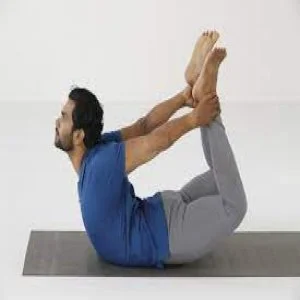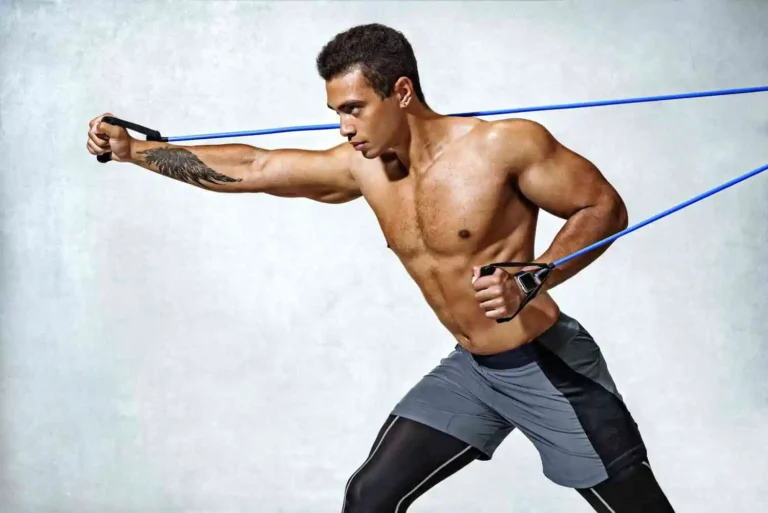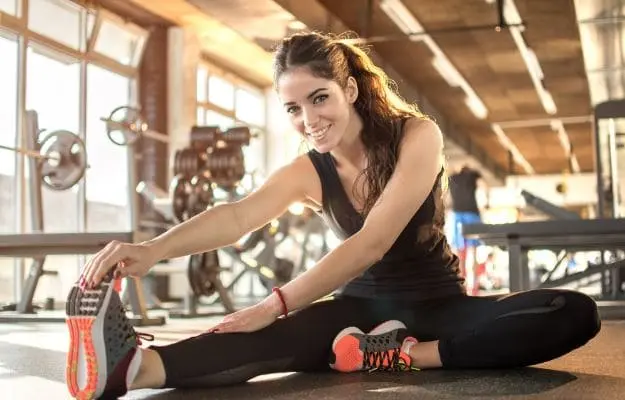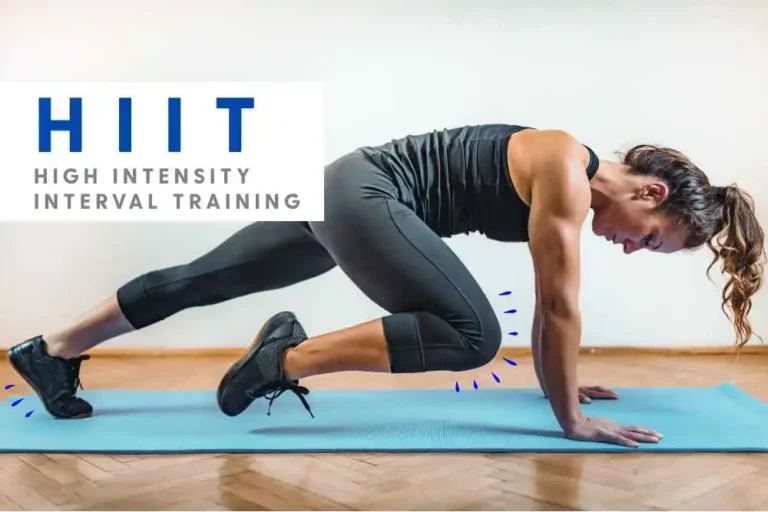Boat Pose (Navasana)
What is Boat Pose (Navasana)?
Boat Pose, or Navasana (from the Sanskrit words nava meaning “boat” and asana meaning “pose”), is a foundational yoga posture that strengthens the core, improves balance, and enhances focus. This pose is often practiced as part of a yoga sequence to develop abdominal strength, spinal stability, and overall endurance.
A lot of physical confusion can be resolved with this boat posture. Naukasana strengthens the pancreas, liver, and lungs. It aids in maintaining blood sugar levels and increasing blood circulation. It lowers the back at a time considerably more quickly and builds blood circulation and oxygen around the abdomen. For those who want to reduce belly fat and tone their abs, Naukasana is helpful.
Which muscles are used in the Boat pose?
- Rectus abdominis
- transverse abdominis
- erector spinae
- Quadriceps
- Hip flexors
- Hamstrings
- Upper back and neck muscles
- Biceps
- Triceps
What are the Health Benefits of Boat pose?
- Helps digestion. During boat posture, the diaphragm is raised, which promotes increased airflow through the abdomen and stimulates the internal organs. This airflow can facilitate digestion by reducing strain on the stomach and liver.
- Strengthens the torso. The boat pose elevates your chest and functions your core muscles while improving your hip flexors and adductor muscles, resulting in an improvement in hip extension.
- Stretches the hamstrings. Hamstring tightness can limit flexibility or perhaps cause harm; boat posture can help release this tension.
- Tones and Energize Abdominal Organs: Your abdominal organs align, extend, and relax when you exit Naukasana, which aids in the removal of belly fat. When the gastrointestinal organs are restorative, the processes of digestion, absorption, and transport are revitalized. Naukasana’s healthy digestion helps to reduce acidity and constipation while also keeping a muscular metabolism.
- Redevelop Iliopsoas Muscle: The strongest hip flexor is the Iliopsoas muscle, which is aspected by the Psoas and Iliacus. The purpose of walking, running, and standing is determined by this muscle.
- Placid Mind: Like the majority of yoga poses, the Naukasana relieves tension and promotes mental calmness and relaxation. A calm mind allows you to focus on the here and now, work quickly, and maintain a healthy physique. Naukasana’s benefits include relieving distress and maintaining mental clarity and relaxation after a difficult time. Avoid this yoga pose if you have a severe headache, migraine, or low blood pressure.
What are the Preparatory poses for Boat Pose?
Adho mukha svanasana, Uttanasana
How to Perform Naukasana / Boat Pose?
- You can start the boat posture supine or sitting on the floor. It’s harder to begin in a supine position.
- Sit with your legs straight and your knees slightly bent if you’re starting from a seated posture.
- To balance on your tailbone, take a deep breath, contract your back muscles, lean back a little, and raise your legs until they form a 45-degree angle with the floor.
- To straighten your legs, raise your toes toward your forehead while maintaining a straight back. Maintain your shins parallel to the floor if this is too challenging.
- Maintain an open chest, arms parallel to the ground, palms facing inward.
- This position lasts ten to twenty seconds.
Boat Pose (Navasana) Video
What are the Beginners’ Tips for Boat Pose?
- Imagine zipping up a tight pair of jeans and then fastening the button to drag your lower abdomen in and upward.
- Rather than bringing your arms parallel, you can retain your hands behind your knees.
- To strengthen those muscles, place a block between your inner thighs.
- Reach out and wrap a strap around the bottoms of your feet to complete the Boat Pose. Furthermore, this assistance enables long-term stance maintenance.
What are Follow-up poses for Boat Pose?
Utkatasana, Halasana, Sirsasana, Shalabhasana, Bhujangasana, Dhanurasana, Adho mukha svanasana, and Baddha Konasana
What are the Types of Boat Pose?
There are three types of Naukasana.
- Ardh Naukasana (half boat pose)
- Paripurna Naukasana (full boat pose)
- Eka pada Naukasana (One leg boat pose)
Half-boat pose (Ardh Naukasana)
What is Half-boat pose (Ardh Naukasana)?
The half-boat position, also known as Ardha navasana, is a sitting balancing pose that calls for a forward bend. Given the degree of difficulty and strength required, the position falls into the median range.
Ardha Asana uses the supine position. It chooses to work the hip flexors, adductor muscles, and abdominal muscles. In addition to this, it works the spine, hamstrings, and quadriceps. In addition to giving the body strength and flexibility, it also improves the facilitator’s mental well-being.
How to Perform Half Boat Pose (Ardh Naukasana)?
- With your legs straight and out in front of you, sit in dandasana on the floor.
- Fold your knees inward while keeping the leg on the mat and your hands by your sides.
- After kneeling, bring your hands.
- Force yourself to keep your lower legs parallel to the floor and elevate your feet off the ground.
- On your sitting bones, try to achieve balance.
- With your fingers pointed ahead, raise your arms and release your hands. In keeping with the lower legs, keep their collateral on the ground.
- Hold the pose for 30 to 60 seconds. Continue to breathe normally.
- Maintaining a straight spine, inspire yourself to draw your upper body to your core.
- Hands with mixed fingers return to the back of the head and bend back instead of bringing them to knee level.
- The legs are then rigidly stretched at a 30 to 35-degree angle while being stretched linearly forward.
- The same process is used for the other steps of leaving the position.
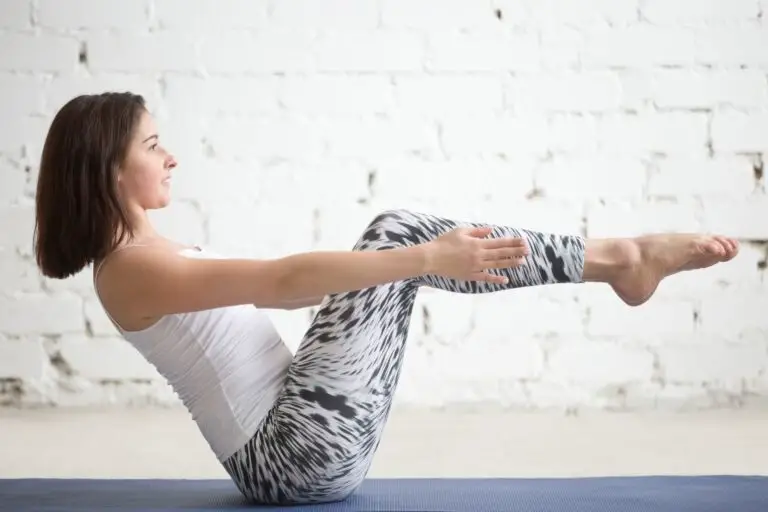
Full boat pose (Paripurna Naukasana)
What is a Full boat pose (Paripurna Naukasana)?
The English name “full boat stance” was coined since “marijuana” means entire, full, or complete in Sanskrit, “Nava” means boat, and “asana” denotes posture. Finding strength in this posture will help you position and settle your body, mind, and emotions despite all the efforts and numerous tasks needed.
With your legs together, feet flat, and knees bent, take a seat on the floor. Move your hands slightly behind your hips, elbows bent away from you, fingers pointed toward your feet. Elevate your heels one or two inches off the ground and take a mild slant back. Throughout this position, make sure your back remains linear rather than rounded.
How to Perform Full Boat Pose (Paripurna Naukasana)?
- Bend back instead, being careful not to curve your back, and raise down the top of the sternum. stability of your weight supported by your tailbone and sitting bones. Raise your thighs 45 degrees above the floor, keeping your knees bent. Raise your knees gradually until your toe tips are just over your eyeballs, if at all possible.
- Keep your ascending collateral to the floor and your knees bent if that is not possible. Draw your shoulders back and extend both arms forward alongside your legs, collateral to the ground, palms facing in while maintaining an open heart and a long spine.
- Keep your lower abdomen hard and flat, but not broad and hard. Breathe while flexing your heels or pointing your toes. Hold the position for 10 to 20 seconds, then gradually increase to one minute.
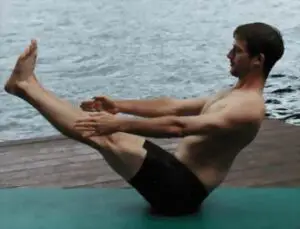
One leg boat pose (Eka pada Naukasana)
What is One leg boat pose (Eka pada Naukasana)?
A simple sitting pose that tones the abdominal muscles is eka pada savasana. The name is derived from the Sanskrit words eka means “one,” pada means “foot” or “leg,” nava means “boat,” and asana means “position” or “posture.”
Eka pada savasana, which is a simplified form of savasana and a pre-savasana pose, is characterized by a “V”-shaped body structure that balances on the buttocks with the legs lifted and the arms straightened. A one-footed reminder on the floor with the knee bent is known as the eka pada form. The bent knee falls to the side in one additional leg shape. The grounded leg rises straight as in the stick position for a more profound stretch. Eka pada savasana is referred to as a one-leg boat stance in English.
Navasana is an essential part of Ashtanga yoga’s main sequence and is considered vital in other systems of yoga due to its mental and physical advantages. The Eka Pada form is recognized for its ability to enhance focus and concentration in addition to strengthening the core.
Because of its emphasis on the center of the body, the asana is typically thought of as a way to initiate the Manipura (solar plexus) chakra. Starting the Manipura chakra during the eka pada navasana exercise gives the yogi self-approval, as well as a sensation of power and vitality. Yogis with a healthy Manipura chakra are more self-aware and motivated.
How to Perform One Leg Boat Pose (Eka pada naukasana)?
- Place the leg down, turn the hip outward, and place it in a half-butterfly position. If necessary, use the strength of your right arm and leg to elevate the leg and grip the ankle, balance on your tailbone, and gently compress your stomach.
- Depending on the point in your yoga sequence and your student’s ability, the under-signal and yoga sequences that yoga instructors have added demonstrate many variations of the One-Legged Half Boat Position. Begin with Staff Position or Dandasana.
- While seated, extend your right leg forward and wrap the left foot around your right thigh. With the palms facing everyone, raise the arms above the straight leg, just like you would on the ground.
- Lean back slowly, press out across the heel, and raise the right leg until your gape rests on the big toe.
- Pull the arms around the center of the body, then relax the shoulders away from the ears to open and lift the chest.
- Hold your breath for two to six breaths as much effort should be put into elevating the chest as into raising the legs.
- Release by gradually lowering the arms and legs to the ground.
- Repeat on the opposite side.

What are the Modifications and Variations in Boat Pose?
To make the boat stance easier, you can change the beginning position. By bending your knees to maintain your shins parallel to the floor, you can also change the final position.
In order to perfect this pose and lessen tension, use a yoga strap or ballast. While a hard pillow or ballast behind your back might help you stay balanced and lessen the pressure on your back, a strap can help you keep your legs in place.
You can learn the fundamentals of the form by practicing with these versions. Removing the adjustments gradually will make it more difficult and test your skills.
Contraindications for a boat pose
- Back pain or injury
- Neck pain or injury
- High blood pressure
- Pregnancy
- Menstruation
- Hernia
- Asthma
- Recent abdominal surgery
- Headache or migraine
FAQs
Why is Boat Pose so difficult?
The difficult pose known as Boat Pose (Navasana) works your legs, hip flexors, and core. Although the configuration may appear fairly easy to create, supporting the weight of your legs and spine against gravity’s downward pull requires a great deal of muscle and movement.
How long should I do a Boat Pose?
To straighten your legs, raise your toes toward your forehead while maintaining a straight back. Maintain your shins parallel to the floor if this is too challenging. Extend your arms parallel to the floor, palms facing inward while maintaining an open chest. This position should be kept for 10-20 seconds.
Who should avoid Navasana?
If you have low blood pressure, a severe headache or migraine, or have recently experienced any chronic illnesses or spinal abnormalities, avoid doing this yoga pose. Patients with heart conditions and asthma are recommended to avoid this position.
Does Boat Pose reduce belly fat?
The boat pose increases balance and coordination by strengthening the spine, hip flexors, and abdomen. Maintaining a balanced posture while raising your legs and torso works your core, improves digestion, and aids in weight loss.
References:
- EkhartYoga. (2021a, March 4). How to do Boat Pose or Navasana – Ekhart Yoga. Ekhart Yoga. https://www.ekhartyoga.com/resources/yoga-poses/boat-pose
- Navasana Yoga (Boat Pose) | Yoga Sequences, Benefits, Variations, and Sanskrit Pronunciation | Tummee.com. (2018, February 12). Tummee.com. https://www.tummee.com/yoga-poses/boat-poseCopy
- Smith, L. (2024, August 16). Yoga How-To: The Boat Pose. WebMD. https://www.webmd.com/fitness-exercise/yoga-how-to-the-boat-pose
- Sorathiya, D. (2024b, October 10). Naukasana: Health Benefits, How to do?- Variations. Mobile Physiotherapy Clinic. https://mobilephysiotherapyclinic.in/naukasana-yoga-pose/
